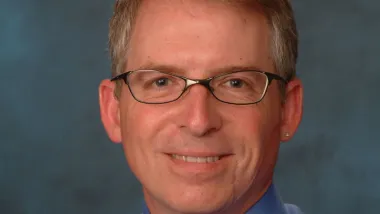Technology creates new challenges and opportunities, and this came home to me a couple of weeks ago when I was previewing a rough cut of Gridlock: Hell on Wheels, a video on traffic congestion released by Reason Foundation today. In the video, Comedian Drew Carey makes the following off-the-cuff comment on a morning drive-time radio show: “I would love to own a freeway in LA.”
Technology creates new challenges and opportunities, and this came home to me a couple of weeks ago when I was previewing a rough cut of Gridlock: Hell on Wheels, a video on traffic congestion released by Reason Foundation today. In the video, Comedian Drew Carey makes the following off-the-cuff comment on a morning drive-time radio show: "I would love to own a freeway in LA."
Why not? Gridlock earns its name on LA's freeway system where traffic counts rank among the densest in the nation. If there is anywhere someone could make money owning and managing a road system, LA is the place.
But this is a revolutionary paradigm, only made practical by rapid advances in technology and new applications of roadway management. Over the last 15 years, technology has advanced to the point where roads, particularly limited access highways, no longer need to be "public goods"-built and paid for by the public sector with "free" access to all users. The 91 Express Lanes in Southern California have helped show this principle along with dozens of HOT lane projects across the US.
Using variable rate pricing-increasing prices when roads are congested and lowing prices when they are underutilized-roads can be priced to cover their costs and, in the process, achieve more efficient and effective road services. The key will be to price roads so that they provide a benefit people will pay for-speed and reliability. Priced roads also have the benefit of dedicating excess capacity to mass transit, creating "virtual" exclusive busways. Transit and cars win.
Road pricing roads carries opportunities and challenges for planners. In addition to making transit more effective, travelers would have stronger incentives to look for alternatives to driving. Pedestrian friendly street designs, mixed use, telecommuting and even live-work arrangements would become relatively more attractive. Of course, some people might have an incentive to live even further out, but at least these choices would more closely reflect the true costs of providing the transportation services they use.
Of course, this means highways would no longer be free. So, there would not be a Drew Carey "freeway". There could be a Drew Carey highway, and perhaps that's progress.

Planetizen Federal Action Tracker
A weekly monitor of how Trump’s orders and actions are impacting planners and planning in America.

Chicago’s Ghost Rails
Just beneath the surface of the modern city lie the remnants of its expansive early 20th-century streetcar system.

Amtrak Cutting Jobs, Funding to High-Speed Rail
The agency plans to cut 10 percent of its workforce and has confirmed it will not fund new high-speed rail projects.

Ohio Forces Data Centers to Prepay for Power
Utilities are calling on states to hold data center operators responsible for new energy demands to prevent leaving consumers on the hook for their bills.

MARTA CEO Steps Down Amid Citizenship Concerns
MARTA’s board announced Thursday that its chief, who is from Canada, is resigning due to questions about his immigration status.

Silicon Valley ‘Bike Superhighway’ Awarded $14M State Grant
A Caltrans grant brings the 10-mile Central Bikeway project connecting Santa Clara and East San Jose closer to fruition.
Urban Design for Planners 1: Software Tools
This six-course series explores essential urban design concepts using open source software and equips planners with the tools they need to participate fully in the urban design process.
Planning for Universal Design
Learn the tools for implementing Universal Design in planning regulations.
Caltrans
City of Fort Worth
Mpact (founded as Rail~Volution)
City of Camden Redevelopment Agency
City of Astoria
City of Portland
City of Laramie






























